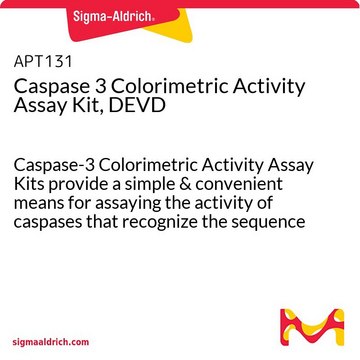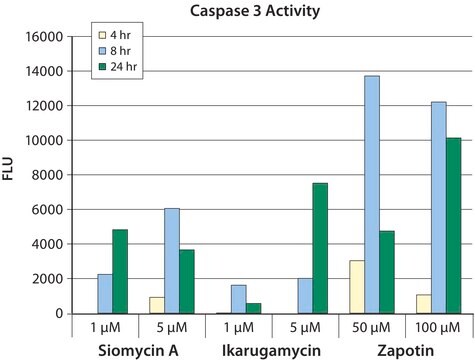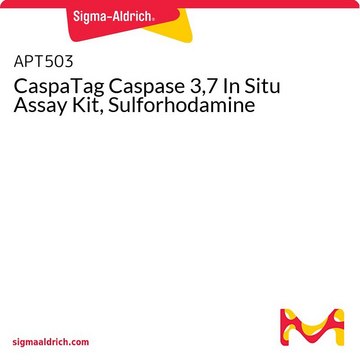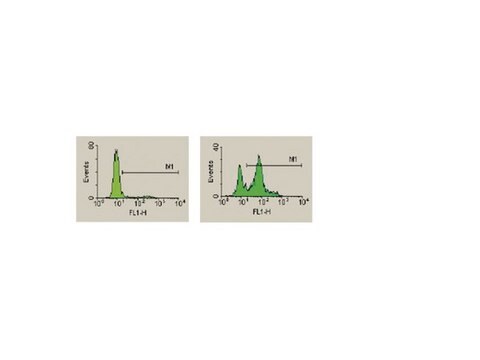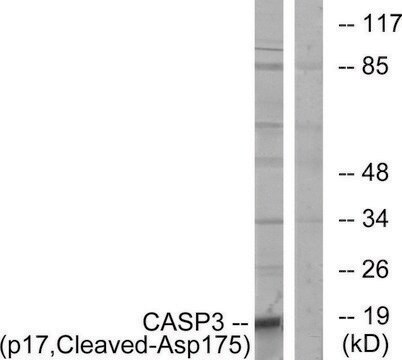APT165
Caspase 3 Colorimetric Activity Assay Kit, DEVD
Caspase-3 Colorimetric Activity Assay Kits provide a simple & convenient means for assaying the activity of caspases that recognize the sequence DEVD.
Synonym(s):
CPP32
About This Item
Recommended Products
Quality Level
species reactivity (predicted by homology)
mammals
manufacturer/tradename
Chemicon®
technique(s)
activity assay: suitable
NCBI accession no.
UniProt accession no.
detection method
colorimetric
shipped in
dry ice
Gene Information
human ... CASP3(836)
General description
Application
Apoptosis & Cancer
Components
5X Assay Buffer (Part No. 90066): 10 mL
Caspase-3 Substrate (Ac-DEVD-pNA) (Part No. 90080): 1 mL of 3 mg/mL solution
Caspase-3 Inhibitor (Ac-DEVD-CHO) (Part No. 90067): 50 μL of 100 μM (0.05 mg/mL) in DMSO
pNA Standard (Part No. 90085): 250 μL of 10 mM in DMSO
Storage and Stability
Special Precautions:
· After thawing reagents, use immediately or aliquot and freeze at -20oC for longer storage. Avoid repeated freeze/thaw cycles.
· The Caspase-3 substrate and pNA standard are especially light sensitive. Maintain these reagents in amber or covered containers.
Legal Information
Disclaimer
Storage Class Code
10 - Combustible liquids
Regulatory Listings
Regulatory Listings are mainly provided for chemical products. Only limited information can be provided here for non-chemical products. No entry means none of the components are listed. It is the user’s obligation to ensure the safe and legal use of the product.
PDSCL
Please refer to KIT Component information
PRTR
Please refer to KIT Component information
FSL
Please refer to KIT Component information
ISHL Indicated Name
Please refer to KIT Component information
ISHL Notified Names
Please refer to KIT Component information
Cartagena Act
Please refer to KIT Component information
JAN Code
キットコンポーネントの情報を参照してください
Certificates of Analysis (COA)
Search for Certificates of Analysis (COA) by entering the products Lot/Batch Number. Lot and Batch Numbers can be found on a product’s label following the words ‘Lot’ or ‘Batch’.
Already Own This Product?
Find documentation for the products that you have recently purchased in the Document Library.
Our team of scientists has experience in all areas of research including Life Science, Material Science, Chemical Synthesis, Chromatography, Analytical and many others.
Contact Technical Service
